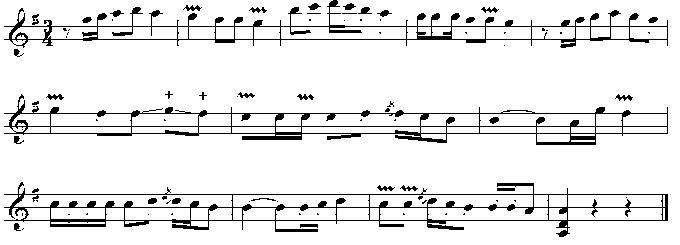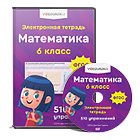To teach musical ornaments and methods of their performance in teaching "Instrumental performance and ensemble science" to students of higher education music.
Annotation: The music of each nation and the works created by composers have rich musical ornaments. Without musical ornaments, music cannot have its full content. Musical ornaments not only enrich the melody in all respects, but also play a huge role in revealing its character. Musical ornaments consist of various melismas and kachirims.
The author describes the teaching of musical ornaments and methods of their performance in the teaching of "Instrumental performance and ensemble science" to students of higher education music.
Keywords: ancestors, research, scientific research, independence, national values, folk music, musical ornaments, composer.
Introduction. Music is such a great science that it has been and continues to be studied in this field for centuries, a single whole idea on the basis of scientific research, recognized by our great ancestors and found in practice. The performing tradition, which has undergone theoretical and practical experiments, plays a particularly important role in the realm of music. It has been around for centuries thanks to independence. Understanding our true identity, feeling our national values from the heart, should be the main goals we set for ourselves.
The music of each nation and the works created by composers have rich musical ornaments. Without musical ornaments, music cannot have its full content. Musical ornaments not only enrich the melody in all respects, but also play a huge role in revealing its character. Musical ornaments consist of various melismas and kachirims.
Melismas are called "trell", "forshlag", "mordent" and "gruppetto" and are widely used in the melodies and songs of almost all peoples, as well as in the works of composers. The ornaments found in Shashmaqom's works and classical Uzbek melodies are called melismas, as well as "kachirim" and "nola". Kochirim, nola includes all the national musical ornaments: "bidratma", "saykallar", "tolling", "nakhshlag", "kashish", "molish". helps.
As a result of scientific and pedagogical research of professors and teachers of the Department of Traditional Performance of the Conservatory of Uzbekistan, exemplary work is being done on the performance of samples of shashmaqom works in Kashgar. In particular, the fact that many melodies and songs are adapted for the performance of the Kashgar rubab, and the decorations in it are clearly defined, remains one of the main factors in achieving good results in the pedagogy of instrumental performance.
We will now consider melissa and kachirim separately in side-by-side examples in order to compare the differences and similarities between them as well.
Of these, the forshlag (German: "vorschlag" - "before", "pre-pressure strike") is written in small notes in front of the main note, and is divided into single forshlag and double forshlag. The unit forshlag (also known as the “short forshlag”) is played at the expense of the length of the main note with a short stroke upwards. Single forshlag is also known as "parbi parron" in traditional performance, i.e. "flying percussion" and is widely used in the work of composers as well as in traditional performance.
“Double forshlag” is written in front of the main note with two small notes and is played briefly with a tattoo given from the bottom up.
In practice, forshlags are common in works of different speeds, so its length and whichever sound is played, sometimes due to the nature of the work. That is, in some cadences, or in parts that can be played freely, there are cases when the forshlags are played a little wider in order to achieve an expressive performance of the music. The same forshlags are performed by the tremolo method.
Nakhshlag (German: Nachschlag) is one of the most widely used musical ornaments in the Kashgar rubab and many mizrob instruments. It is marked with small notes that are written after the main sound.
While forshlags are performed by tapping each sound with a mizrob before the main sound, the pattern differs by playing each main sound with a mizrob and then playing the following sounds under the main sound. Mastering this skill is also a complex execution technique, and it is important to be able to feel the strings and control the movements of the fingers of the left hand in particular.
The next ornament is "mordent" (it. "Mordente" - "sharp", "sharp tip" the main sound is performed with a tone or half a tone above or below. .
In revealing the character of the work, the works of European classics lead to an understanding of the importance of each element, in particular the performance of the mordent at the desired level.
“Sayqal” is one of the most widely used types of ornaments in Kashgar rubabi in traditional performance. It is represented by placing a + sign over the mordent sign. There are 4 types. The main difference between a mordent and a carving is that if all the sounds of a mordent are performed with a mizrob, the carving is done with just one stroke, and the rest is done by pressing the net with the left hand under the sound of that percussion. The main feature of the carving is that it does not turn off the sound of the percussion sound. In this case, the first or second finger, which presses on the tattooed curtain, will have to make sure that the tone is not interrupted and connected to the next sound tone by a specific glissando without rising from the curtain.
One of the most common melismas is “trell” - (“trillore” - “vibrate”, “vibrate”) - used in almost all stringed and wind instruments.

The trellis is played at a rapid tremolo-like speed up and down the Kashgar rubab. In the experiment, it is observed that the movements of the right and left hands do not match when students play the trellis. The trellis should be well mastered, especially in Kashgar rubab. The reason is that the expansion of the repertoire of modern performance and the development of our modern music, in particular, modern pop melodies and songs, also have a positive impact on the development of the performing arts on national instruments. Such melodies and songs require the music to be performed elegantly with very light movements in a certain direction. In such works we see that the trellis is used very widely in sync with other elements of decoration.

When performing works by composers, the trellis is mainly performed using the first and second fingers. However, in the performance of modern pop melodies and songs, such as S. Azizbaev's "Kel endi" and A. Olimov's "Dil soz" mentioned above, other fingers need to be very light. In these examples, the second finger is placed on the sounds to be trellis, and the trellis is done with the third and fourth fingers. We also recommend that students play the trellis regularly with all fingers as an exercise. This exercise causes the fingers to move slightly.
Trel is also referred to as ‘bidratma’ in traditional performance. The peculiarity of "Bidratma" is that, in addition to beating with a mizrob, it can be performed only under the sound of a percussion. The + sign is placed on top of the trell sign. Often, students will break out the sound of the main note as they perform the syllable and bidrat. Mastering these skills is a very complex process that requires regular shutdown and listening to a lot of music.
"Excitement" is a method of vocal performance, which is widely used in Kashgar rubab, as in all instruments at the moment. It is performed by flipping the net with the fingers of the left hand over the string.
Excitement enhances the expressiveness of the melody, ensuring that the sounds sound soft, melodious and attractive.
Excitement is widely used in the works of composers, in the works of shashmaqom, in pop melodies and songs of the moment, but in the work of composers it is not marked with a special symbol. Once the musician has mastered the work, he will have to use it only in a logical way, not in any large-length tremolo or musical sentence. In this regard, of course, it is advisable to rely on the experience of experienced teachers - musicians. The ripple is marked with a fox line on the note, conditionally, in a traditional performance.
In the works of composers, melism, called "glissando", is used. "Glissando" (it. "Glissando" - "sliding") - to slide from one sound to another. As with many instruments, glissando is used in the performance of the Kashgar rubab.

In the Kashgar rubab, glissando is done by sliding the finger of the left hand down or up along the handle. This method is performed with the left hand on all mizrob instruments and bow instruments. The glissando between large intervals is mostly played with the first finger. It can also be played on other fingers at smaller intervals. In this case, the sliding finger should not break the sound and with a smooth motion should reach the second note at the right time to the length of the note.

The glissandos in the second interval in the passage from Dilorom Saidaminova's "Landscapes of Dreams" are made with the mizrob in the rez method, and with the left hand in the "kashish" method, that is, by waiting for the net.
In the Kashgar rubab, the glissando is performed with the right hand when the left hand slides along the handle, but in some dollars, the glissando is performed under the same sound when the first sound is struck with the right hand. This method is widely used when performing shashmaqom and Uzbek folk classical melodies. In this case, the sound of glissando is marked with a + sign, and this type of decoration is called "molish" (Persian: "molash" - "silamok").
In the process of initial study of this ornament in the musician, as a result of not being able to perceive the periodicity of gliding, its false and dry sound is observed. In order to master the performance of the melody, it is important for the reader to have a deep understanding of the work, to be able to understand every sentence and element of the melody.
These methods make it possible to perform small, light moans in the Kashgar rubab, which are found in the way of singing and played on bow-stringed instruments.
Another method of decoration used in mizrobli instruments is kashish (Persian "kashidan" - "tortmok"). These national musical ornaments have long been used by singers and musicians.
N. Mironov in his book “Music of Uzbeks” mentions that in the songs sung by folk dofis, the voice is sung as a kind of glissando, and in the vernacular it is called “kashish”. This method is performed in Kashgar rubab by lifting the net with your fingers. In this case, you can change the pitch of a sound by gliding it up or down a ton. It is performed both in the tremolo method and in the solo percussion method. When glissando upwards, the string is played with the right hand in the form of a narrow rez or solo tattoo at the same time as the string starts to rise. When gliding down, the narrow front is played with the mizrob from the moment it is raised and lowered with the left finger. In this case, the ascending curtain should be pressed with the 2nd or 3rd finger, the curtain adjacent to this curtain should be pressed with the 1st finger, and the 2nd and 3rd fingers should help while waiting for the net. This method is one of the most complicated methods and requires a lot of practice as well as a lot of listening. The reader will need to be shown the exact accompaniment or extensive use of magnetic recordings. In particular, what interval the glissandoni has is a process that can only be regulated by the performer’s hearing. It is also one of the key factors in mastering the ability to feel the net of the fingers of the left hand. This is because during the initial study period, as a result of the fingers not being able to feel the strings, the strings come out from under the fingers in two directions, or the strings come together, causing the sound tone to disappear.
SM Takhalov, a former professor at the Tashkent State Conservatory, has done a commendable job of recording notes, especially "kashish." Nevertheless, teaching and learning on instruments in traditional performance practice continues today in a more oral tradition. Therefore, in order to master such ornaments perfectly, the teacher must develop the student's hearing from the earliest stages of teaching. In this case, the inclusion of small, simple and light folk melodies in the repertoire of regular training, and regular and purposeful practice will be the basis for a thorough mastery of traditional performance skills in the later stages of training.
In the Kashgar rubab appliqué section, as we have seen, the appliqué in traditional execution is unique. This, of course, stems from the ability to perform the above embellishments while ensuring the full performance of this melody. It is individual in nature and should be chosen according to the student's performance capabilities and professional training.
Conclusion. As mentioned above, the musical ornaments of our national music have exactly the same intonational significance, and their use in the place where they are encountered can change the mood of the melody. In practice, not all shashmaqom works and other Uzbek classical melodies are fully recorded with such symbols. When studying and performing melodies that are not recorded, that is, works that are not reflected in the notes, it is advisable to use transcripts in a way that does not distort the melody or, if possible, reveals the melody as fully as possible. Some student-musicians take these ornaments for granted and use them where they are not needed. This can have a negative impact on a student’s development as a perfect musician.
List of used literature.
F.N.Vasilev. "Gamma and arpeggio application for Kashgar rubobi". «Teacher», T., 1978.
F.N.Vasilev. "Rubob's textbook." T., "Teacher" 1963.
O’.Toshmatov. “History and development of instrumental performance” (Lecture) prof. O'z.DSM. 2015.
X.Nurmatov. "Rubob's textbook." Publishing and Printing House named after G. Gulom, T ,. 2003.
X.Nurmatov. "Rubob's textbook." T., "Teacher." 1993.
X.Nurmatov. "Songs of Kashgar rubobi". T., G. Gulom Publishing House of Literature and Art. T. 1989.




















